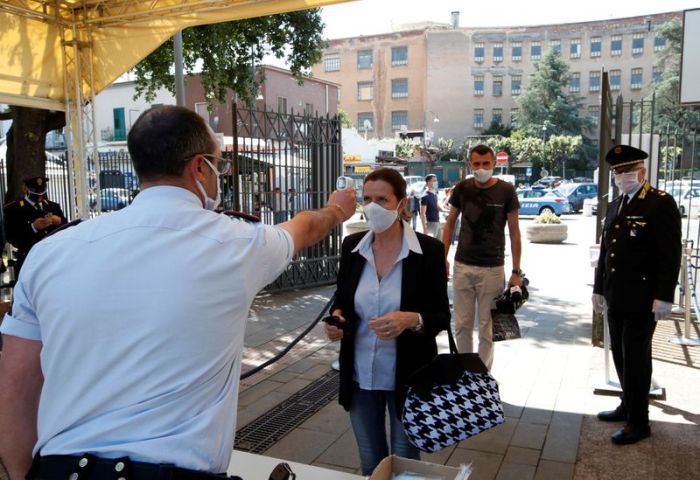(Reuters) – Twitter Inc <TWTR.N> said on Tuesday it would take no action at this time on tweets from U.S. President Donald Trump about the 2001 death of a former congressional staff member for Joe Scarborough, after her widower asked the company to remove them for furthering false claims.
In a letter to Twitter’s chief executive Jack Dorsey that was published by the New York Times, Timothy J. Klausutis asked that the company remove a tweet by the president “alluding to the repeatedly debunked falsehood that my wife was murdered by her boss, former U.S. Rep. Joe Scarborough.”
Lori Klausutis, who had an undiagnosed heart condition, fell and hit her head on her desk at work. Her death was ruled an accident.
Trump said he had seen the family’s letter, but stood by his comments, telling White House reporters: “I’m sure that ultimately they want to get to the bottom of it … It’s a very suspicious thing.”
A Twitter spokeswoman said the tweets would remain.
“We are deeply sorry about the pain these statements, and the attention they are drawing, are causing the family,” the spokeswoman said in a statement when asked about the president’s tweets on Scarborough, now an MSNBC television host with whom Trump has brawled.
Last year, Twitter said it would start labeling tweets from prominent politicians and government officials that broke its rules but that it deemed were in the public interest. The spokeswoman declined to say why these tweets did not fall within that policy.
Later in the day, Twitter for the first time prompted readers to check the facts in tweets sent by Trump, warning readers his claims about mail-in ballots were false and had been debunked by fact checkers.
The blue exclamation mark notification prompted readers to “get the facts about mail-in ballots” and directed them to a page with news articles and information from fact-checkers about the claims.
(Reporting by Elizabeth Culliford; Additional reporting by Lisa Lambert and Jeff Mason; Editing by Howard Goller)


























